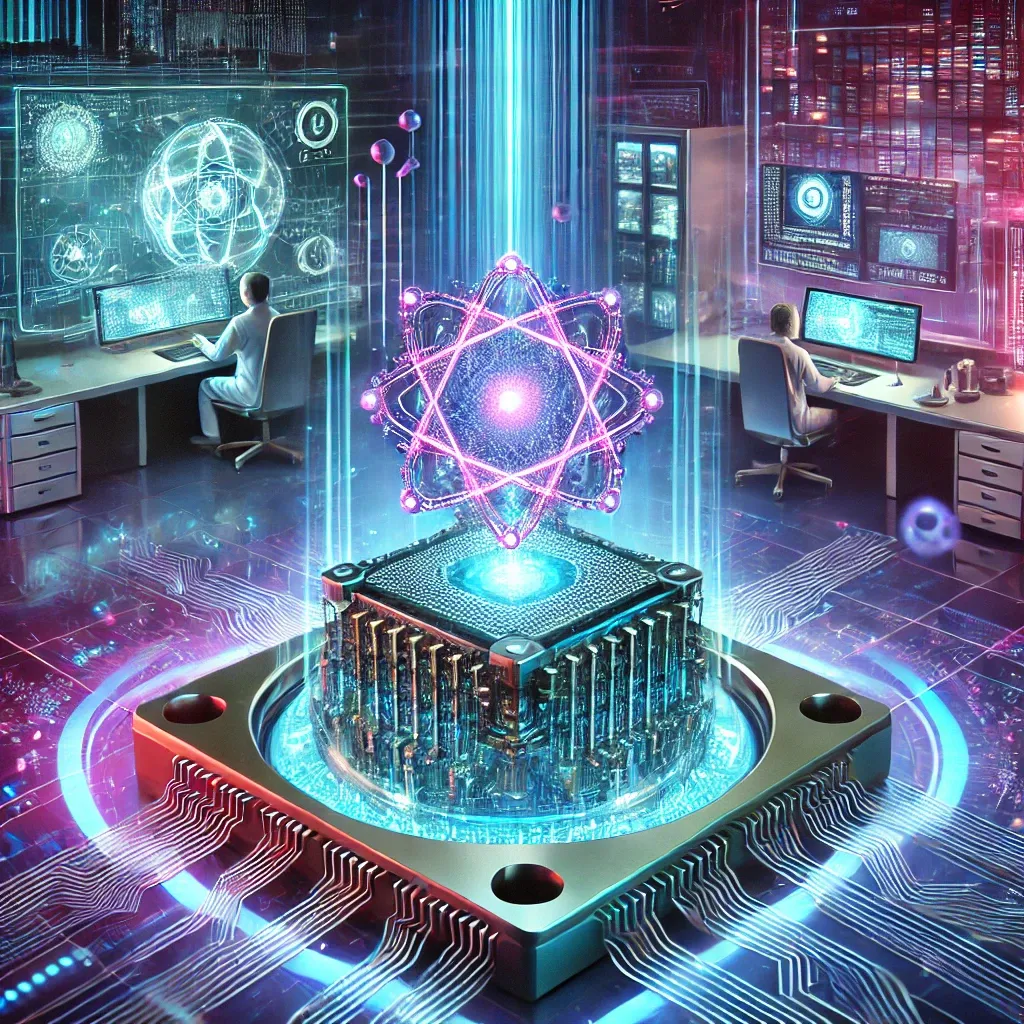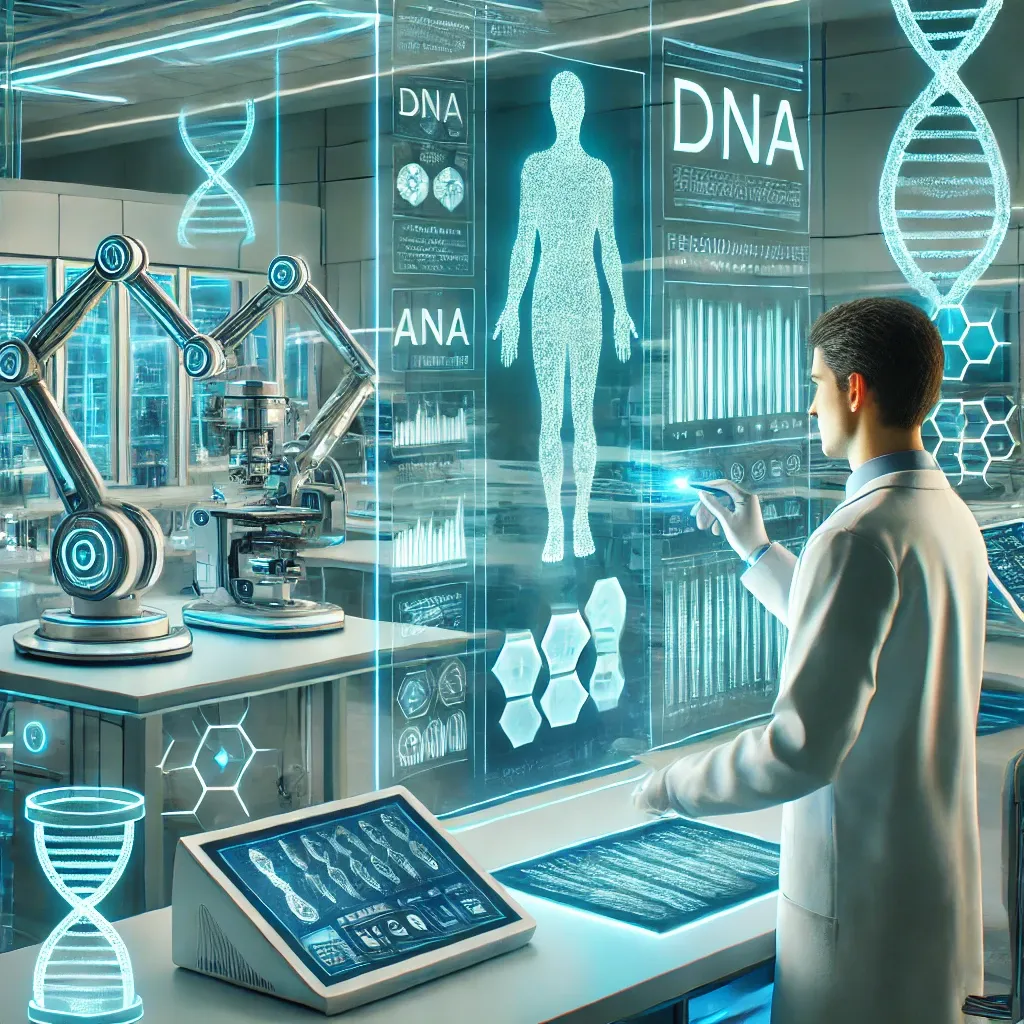As we step into 2024, technological advancements continue to redefine industries and reshape the way we interact with the world. Here are some of the most promising and innovative technology trends to keep an eye on this year.
1. Artificial Intelligence (AI) and Generative AI Expansion
AI continues to be a driving force across multiple sectors, with generative AI revolutionizing industries such as content creation, programming, and customer service. Advanced AI models are now capable of generating high-quality text, images, audio, and even videos, streamlining workflows and enhancing business efficiency.
Generative AI is being leveraged to develop more intuitive chatbots, enhance marketing campaigns, and automate complex data analysis. Its integration into creative fields, from graphic design to music composition, is making AI an indispensable tool for professionals. Additionally, AI-driven automation is reducing manual workload across industries, enabling businesses to focus on innovation and strategic decision-making.
Ethical concerns surrounding AI, such as data privacy and misinformation, are also being actively addressed, leading to the development of regulations and best practices to ensure responsible AI usage. As AI technology continues to evolve, its impact on productivity, personalization, and automation will be profound.
2. Quantum Computing Developments
Quantum computing is making significant strides, driven by increased investment from both tech giants and startups. Advances in quantum processors, error correction techniques, and quantum algorithms are bringing the technology closer to real-world applications.
One of the most anticipated breakthroughs is the enhancement of quantum supremacy, where quantum computers outperform classical computers in solving complex problems. Industries such as cryptography, materials science, and pharmaceuticals stand to benefit from quantum advancements. For example, quantum computing has the potential to revolutionize drug discovery by simulating molecular interactions with unprecedented accuracy.
Governments and private enterprises are working towards making quantum computing more accessible by developing cloud-based quantum services. As research continues, the long-term goal is to integrate quantum systems into mainstream computing, allowing businesses to solve problems that were previously infeasible due to computational limitations. Although still evolving, quantum computing holds the potential to transform industries in ways we are just beginning to understand.
3. Web3 and Decentralized Technologies
Web3 represents a fundamental shift towards a decentralized internet, utilizing blockchain technology to enhance security, data ownership, and privacy. Unlike traditional web systems controlled by centralized entities, Web3 leverages distributed ledger technologies to enable peer-to-peer transactions and smart contract automation.
Decentralized finance (DeFi) is expected to continue growing, offering alternative financial solutions without the need for intermediaries such as banks. Non-fungible tokens (NFTs) are also evolving beyond digital art, with applications in gaming, real estate, and intellectual property rights.
Additionally, decentralized autonomous organizations (DAOs) are gaining traction, providing new models for governance and community-driven decision-making. While challenges such as scalability and regulatory concerns remain, advancements in blockchain infrastructure and interoperability solutions are making Web3 more accessible.
As the ecosystem matures, Web3 technologies have the potential to redefine how we interact online, shifting power from centralized platforms to individual users and fostering a more transparent and secure digital economy.
4. Extended Reality (XR) and the Metaverse
Extended Reality (XR), which includes Virtual Reality (VR), Augmented Reality (AR), and Mixed Reality (MR), is set to transform multiple industries, from entertainment and education to healthcare and remote work. As hardware and software advancements continue, XR is becoming more immersive, accessible, and interactive.
The metaverse—a digital universe where people can work, socialize, and engage in commerce—continues to evolve with better graphics, enhanced AI-driven interactions, and improved virtual economies. Companies are investing in metaverse applications for virtual offices, training simulations, and interactive customer experiences. In education, XR is being used to create engaging, hands-on learning environments, while in healthcare, it aids in medical training and therapy.
Despite challenges such as high development costs and the need for widespread adoption, XR and the metaverse are poised to reshape the way we experience digital and physical interactions, opening doors to new opportunities in business, communication, and entertainment.
5. Sustainable and Green Tech Innovations
Sustainability is becoming a top priority as industries adopt green technologies to combat climate change. Innovations in renewable energy, such as advanced solar panels, wind turbines, and next-generation batteries, are making clean power
more efficient and accessible. Carbon capture and storage (CCS) technologies are also advancing, helping to reduce industrial emissions.
Electric vehicles (EVs) and smart grids are transforming transportation and energy distribution, promoting greater efficiency and sustainability. In addition, biodegradable materials and sustainable manufacturing practices are being implemented to reduce environmental waste. Companies are increasingly integrating AI and IoT to optimize resource usage, further driving eco-friendly solutions.
As governments and businesses push for greener policies and investments, sustainable technology will play a crucial role in shaping a more environmentally responsible future.
6. 6G and Advanced Connectivity
While 5G is still being adopted globally, research into 6G is already underway. Expected to deliver ultra-fast speeds, lower latency, and greater reliability, 6G will revolutionize communication and connectivity. It aims to support real-time applications like AI-driven automation, immersive XR experiences, and smart city infrastructures.
With terahertz frequency bands and enhanced network intelligence, 6G will significantly improve data transfer rates, enabling seamless interactions across devices and platforms. Industries such as healthcare, manufacturing, and autonomous systems will benefit from ultra-reliable low-latency communication (URLLC), allowing for real-time remote surgeries, precision automation, and AI-powered decision-making.
As global research and standardization efforts progress, 6G is poised to reshape digital interactions, offering unprecedented speed and connectivity that will drive the next era of technological advancements.
7. Biotechnology and Personalized Medicine
Biotechnology is making significant advancements, particularly in gene editing, synthetic biology, and precision medicine. CRISPR technology is enabling targeted gene modifications, offering potential cures for genetic disorders. AI-driven drug discovery is accelerating the development of new treatments, reducing research timelines and costs.
Personalized medicine, which tailors treatments based on an individual's genetic makeup, is revolutionizing healthcare by improving efficacy and minimizing side effects. Wearable health technology and AI-driven diagnostics are also enhancing early disease detection and preventive care. As these technologies evolve, they promise to make healthcare more efficient, accessible, and tailored to individual needs.
8. Robotics and Autonomous Systems
Advancements in robotics and autonomous systems are transforming industries by improving efficiency, accuracy, and automation. AI-driven robots are increasingly used in manufacturing, logistics, and healthcare, streamlining operations and reducing human intervention. Autonomous vehicles, including self-driving cars and drones, are progressing towards safer and more reliable transportation solutions.
In healthcare, robotic-assisted surgeries and AI-powered diagnostics are enhancing medical precision. In agriculture, autonomous machines are optimizing farming practices, improving yields, and reducing resource consumption. As robotics and automation continue to evolve, they promise to reshape labor markets and drive innovation across multiple sectors.
Conclusion
2024 promises exciting advancements across multiple technological domains. Keeping an eye on these trends can help businesses and individuals stay ahead of the curve, leveraging innovation to drive progress and efficiency in the digital era.
















0 comments:
Post a Comment